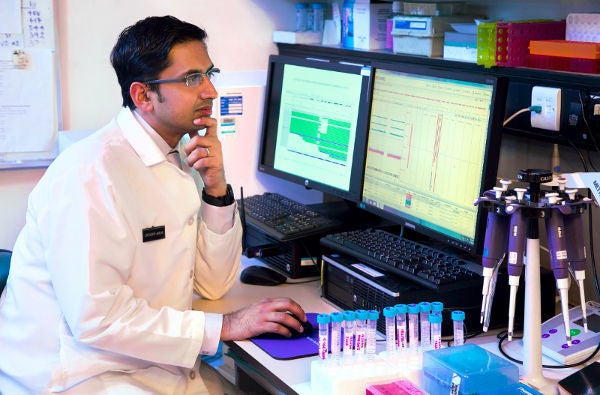
Dr Saumya Jamuar who discovered the first known case of the eponymous rare genetic disease, ‘Jamuar Syndrome’
A team of clinicians and researchers from KKH and the Agency for Science, Technology and Research’s (A*STAR) Institute of Medical Biology (IMB), have identified the world’s first known case of a rare genetic syndrome, known as ‘Jamuar Syndrome’. Their work was published in Nature Communications in January 2020.
The condition, which affects brain development, is named after Dr Saumya Jamuar, Senior Consultant, Genetics Service, KKH, who first encountered the disease in a pair of young siblings.
“The siblings presented with a unique clinical profile, including epileptic seizures and developmental delay, and were enrolled in the BRIDGES (Bringing Research Innovations for the Diagnosis of Genetic diseases in Singapore) programme which looks into undiagnosed diseases of young children,” says Dr Jamuar, who is also Head, SingHealth Duke-NUS Genomic Medicine Centre.
UGDH gene plays key role in human brain development
Whole exome sequencing performed by Dr Bruno Reversade, Research Director at IMB, A*STAR, discovered a unique DNA change in the siblings – a new mutation Ala82Thr in the gene, UGDH, which had never been associated with any genetic disease in humans.
A search for international patients further identified patients from 24 other families worldwide with similar clinical presentation. All 36 children, including affected siblings, were found to carry mutations in the same UGDH gene.
In the laboratory, Dr Reversade's team characterised the effect of this variation of UGDH on brain development, and found that the stability, structure or function of the enzyme encoded by the UGDH gene were affected.
Based on the currently known variants, UGDH mutations are likely to be a frequent cause of recessive epileptic encephalopathy, which is characterised by epileptic seizures and speech and developmental delays of varying severity.
Genomic research empowering development of targeted therapies
“Our discovery of the disease-causing mutations in the UGDH gene could pave the way to finding new therapeutic targets for epilepsies,” says Dr Reversade.
As rare genetic diseases continue to affect about 350 million people globally, collaborative genomic research is empowering physicians to act and make an impact on patients and their families’ lives in a tangible way.
Dr Jamuar explains, “Identifying and characterising these diseases that have never been reported in humans before brings closure to families. It also provides valuable information for physicians to focus our energy on managing the patients’ symptoms based on their underlying diagnosis, as well as move forward towards developing treatments best suited for these patients.”
Get the Health Buddy App
© 2025 SingHealth Group. All Rights Reserved.














 Get it on Google Play
Get it on Google Play